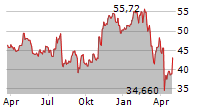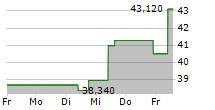
NEW YORK CITY, NY / ACCESS Newswire / February 21, 2025 / Finding a lender usually isn't an issue thanks to the growth in the number of online financial institutions in the past few years. However, confirming the legitimacy of a financial institution is a necessary step before applying for a personal loan. The following article contains a list of steps prospective borrowers can take to do this.
1. Verify the website and domain
Most lenders have an online presence and a loan application that can be filled out on their website. It's best not to do that until the website and domain can be verified. Start by checking for a padlock symbol in the URL at the top of the page. That's an indicator that the site is secure. Click on the padlock to check the date of the security certification.
The next step is to verify the domain. The Internet Corporation for Assigned Names and Numbers (ICANN) has a complete list of all domains, including the party they're registered to and when the registration was submitted. Be cautious about using any site that's been set up recently because it could be an indication that it's not legitimate. Established sites are typically safer.
2. Research the physical address
Even online lenders have a physical address somewhere. Find it on their website and then Google it to see if it's a business address, a residential home, or an empty warehouse somewhere. Some businesses also mailbox providers that provide a physical address at their office with the mailbox number as the "suite number."
Another useful exercise that will help confirm if a lender is reputable is to do a reverse lookup on their phone number. This is simple enough with the internet, but it's best to avoid sites that ask for payment to check the number. The lender's name and address should appear immediately on the search page if the lender is legitimate.
3. Contact the Better Business Bureau
The Better Business Bureau keeps a record of most legitimate lenders that includes any reports of deceptive business practices or complaints. It's a red flag if the lender being checked out doesn't have a listing with the Better Business Bureau. That means they're brand new and don't have a track record yet, or they're not legitimate.
Other organizations can help verify lender legitimacy, including the Chamber of Commerce in the town or city where they're located and the Office of the Secretary of State in the state where the loan request is being made or the home state of the lender. The Secretary of State's office is generally responsible for tracking corporate filings.
The Bottom Line
A borrower's need for a personal loan can sometimes override common sense and cloud their judgment. Reputable lenders have a website and domain that can be verified, a physical address that can be confirmed, and a record with the Better Business Bureau. Anything short of that is a compelling reason to do business elsewhere.
Sponsored Content
About OneMain Financial
View Website
OneMain Financial is the leader in offering nonprime customers responsible access to credit and is dedicated to improving the financial well-being of hardworking Americans.
CONTACT:
Sonakshi Murze
Manager
sonakshi.murze@iquanti.com
SOURCE: OneMain Financial
View the original press release on ACCESS Newswire


